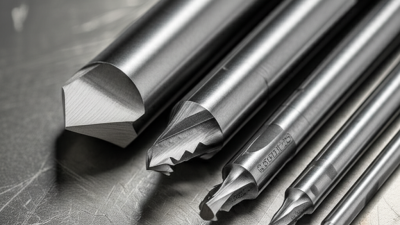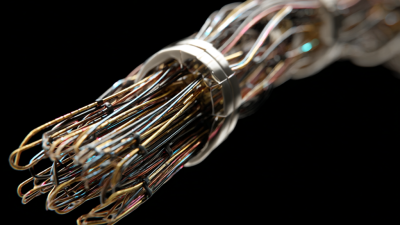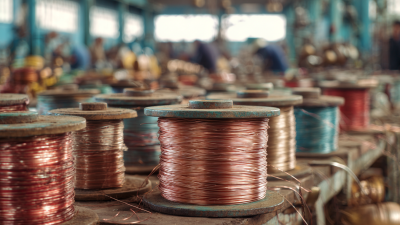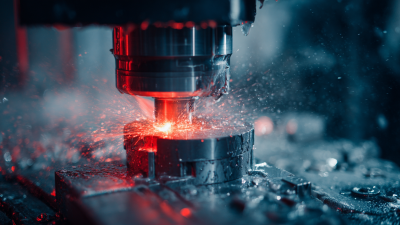In the realm of precision engineering, maximizing efficiency is a crucial objective that drives innovation and productivity. Hss punches, or high-speed steel punches, play a pivotal role in achieving this goal, offering unparalleled performance in various applications. With their exceptional hardness, wear resistance, and ability to maintain sharp edges, Hss punches are ideal tools for intricate processes that demand accuracy and reliability. As manufacturers strive to enhance their operational effectiveness, understanding the advantages of Hss punches becomes essential. This article will explore why adopting Hss punches can significantly improve throughput and precision in engineering projects, ultimately leading to superior outcomes and cost savings for businesses.

Whether in the production of small components or large-scale assemblies, the strategic use of Hss punches can transform the landscape of precision engineering, making it imperative for industry professionals to recognize their importance in modern manufacturing.
High-speed steel (HSS) punches are pivotal in precision engineering, particularly in applications that require meticulous material shaping and forming. These punches are favored for their hardness and durability, enabling manufacturers to produce consistent, high-quality components efficiently. The global market for metal forming tools, including HSS punches, is projected to grow significantly, from $29.41 billion in 2025 to an estimated $51.67 billion by 2032, reflecting a compound annual growth rate (CAGR) of 8.4%. This growth is driven by the increasing demand for advanced manufacturing techniques and the rising need for customized products across various sectors.
Various types of HSS punches each serve specific applications within precision engineering. For instance, standard punches are essential for basic operations, whereas specialized punches, such as those designed for high tensile materials, allow for complex shapes and intricate designs. Additionally, the material type and thickness considerations play a crucial role in the effectiveness of these punches. Understanding these variables is vital to optimizing production processes, particularly in bending and folding applications where the integrity of the formed parts is critical. As technology continues to advance, the role of HSS punches will expand, further enhancing efficiency and precision in manufacturing.
High-Speed Steel (HSS) punches have become indispensable tools in precision engineering applications due to their remarkable durability and performance. HSS is renowned for its ability to withstand high temperatures and resistance to wear, making it an excellent choice for high-volume manufacturing processes. These advantages translate to fewer tool replacements, which can significantly reduce downtime and overall production costs. Furthermore, the precision of HSS punches ensures clean cuts and accurate dimensions, essential for high-quality production.
Tips for maximizing the efficiency of HSS punches include regularly maintaining and sharpening the tools to prolong their lifespan. Additionally, using the correct punch speed and feed rates tailored to the specific material being processed can enhance both punch performance and product quality. Experimenting with different lubrication techniques can also reduce friction and heat buildup, further optimizing the life of HSS punches in your manufacturing operations. Adopting these practices will not only improve operational efficiency but also ensure that the manufacturing processes meet rigorous industry standards.
When choosing between HSS (High-Speed Steel) punches and traditional punching tools, several factors come into play that can significantly impact precision engineering applications. HSS punches stand out for their ability to maintain sharpness and withstand high temperatures, which means faster processing times and reduced downtime. In contrast, traditional tools may require frequent sharpening and replacement, leading to increased labor costs and inefficiencies. The durability and performance of HSS punches can ultimately lead to a more streamlined manufacturing process.
Tip: Always consider the material being processed when selecting a punch type. HSS punches are particularly effective for harder materials, while traditional punches might suffice for softer substrates.
Moreover, HSS punches offer enhanced accuracy due to their fine cutting edges, resulting in cleaner cuts and reduced burr formation. This precision minimizes the need for secondary finishing operations, thereby optimizing overall workflow. On the other hand, traditional punching tools might not provide the same level of accuracy, which could compromise the quality of your final product.
Tip: Investing in high-quality HSS punches can lead to cost savings in the long run by reducing the frequency of tool changeovers and enhancing the quality of the output.
In the realm of precision engineering, the performance of HSS punches is influenced by various critical factors. One significant aspect is the punch-to-die clearance, which, as recent findings suggest, should be optimized between 12 to 15 percent to enhance tool longevity. This careful calibration reduces friction and wear on both punches and dies, ultimately resulting in improved cycle times and greater accuracy in punching operations. Additionally, the appropriate shear angle between -15 to +15 degrees has been identified as a crucial contributor to maximizing tool life, allowing for smoother material flow during the punching process.
Furthermore, the material properties of the workpiece play a vital role in the effectiveness of HSS punches. For instance, the handling of advanced high-strength steel (AHSS) requires specific tooling approaches to mitigate premature wear. Employing optimal clearance and shear angle not only prolongs the lifespan of HSS punches but also ensures that the intricate geometries in precision engineering are achieved with the utmost fidelity. Such considerations underscore the necessity of understanding the interplay between tooling configurations and material characteristics in engineering applications.
Proper maintenance of High-Speed Steel (HSS) punches is essential for achieving optimal efficiency in precision engineering applications. Regular inspection is the first step in ensuring the longevity of these tools. Operators should routinely check for signs of wear, chipping, or deformation. Any noticeable damage can lead to subpar performance and increased material waste, so timely replacement is crucial. Additionally, maintaining a clean workspace can prevent contaminants from compromising the effectiveness of the punches.
Sharpening is another critical aspect of punch maintenance. Dull punches not only reduce efficiency but can also affect the precision of the cuts. It is recommended to use proper sharpening techniques, such as honing and grinding, to restore the cutting edges without altering the punch's dimensions. Furthermore, the use of suitable lubricants during operation can minimize friction, reduce heat buildup, and prolong the life of the punches. By adhering to these best practices, manufacturers can maintain the peak performance of HSS punches, ensuring accuracy and efficiency in their engineering tasks.






